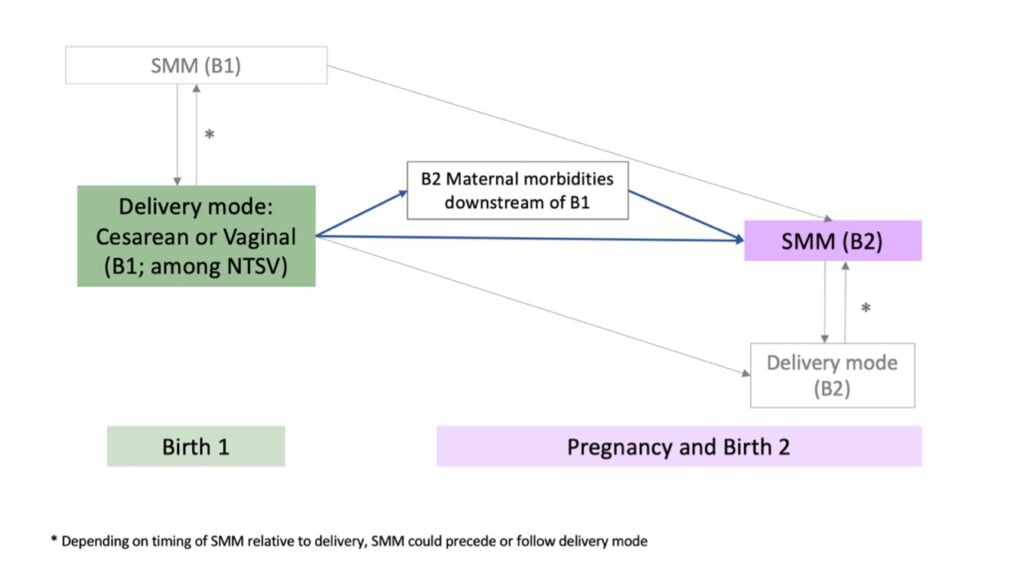Reproductive
A Counterfactual Analysis of Impact of Cesarean Birth in a First Birth on Severe Maternal Morbidity in the Subsequent Birth Shalmali Bane* Shalmali Bane Suzan Carmichael Elliott Main Michelle Odden Julia Simard Peiyi Kan Jonathan Snowden
Severe maternal morbidity (SMM) is a sentinel outcome comprised of unexpected adverse outcomes (e.g., aneurysm) with significant short- and long-term consequences to maternal health. It is known that cesarean birth affects maternal outcomes in subsequent pregnancies, but specific effect estimates related to subsequent SMM are lacking. We sought to quantify the effect of cesarean birth reduction among nulliparous, term, singleton, vertex (NTSV) births (i.e., the most preventable cesarean births) on SMM in the second birth.
We examined birth certificates linked with maternal hospitalization data (2007-19) from California for NTSV births linked with second births (N = 779,382). The exposure was cesarean delivery in first birth and the outcome was SMM in the second birth. We used adjusted Poisson regression models to calculate risk ratios and population attributable fraction of SMM in the second birth and conducted a counterfactual impact analysis to estimate how lowering NTSV cesarean births could reduce SMM risk in second births (such that individuals with the lowest probability of cesarean delivery instead gave birth vaginally).
The adjusted risk ratio for SMM in the second birth given a prior cesarean birth was 1.68 (95% CI 1.50-1.89); 15.5% (95% CI 15.4%-15.5%) of this SMM may be attributable to prior cesarean birth. In a counterfactual analysis where 12% of the California population least likely to get a cesarean birth instead delivered vaginally, we observed 175 fewer SMM events in a population of individuals with a low-risk first birth and a subsequent birth.
Lowering primary cesarean birth among a NTSV population is one mechanism to decrease downstream SMM events in subsequent births and overall. Additionally, our findings reflect the importance of considering the cumulative accrual of risks across the reproductive life-course.

